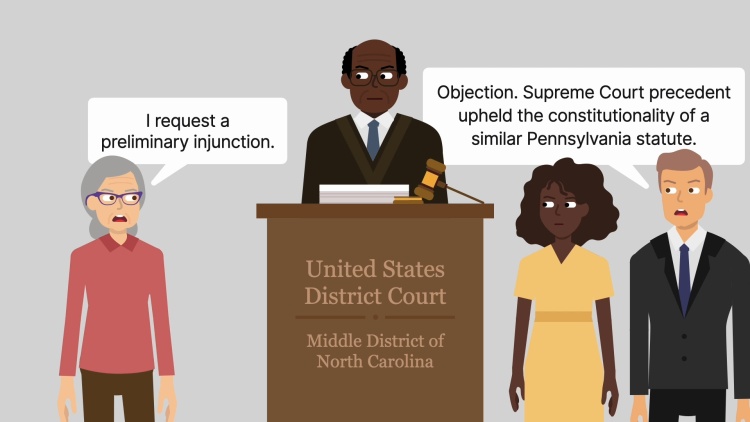Stuart v. Huff
United States Court of Appeals for the Fourth Circuit
706 F.3d 345 (2013)
- Written by Craig Conway, LLM
Facts
A North Carolina statute required a physician or qualified technician to provide to a woman seeking an abortion a real-time ultrasound display of the fetus and a concurrent explanation of what the display depicted. Gretchen Stuart, M.D., individually and on behalf of her patients seeking abortions (plaintiffs), filed suit in federal district court against Janice Huff, the president of the North Carolina Medical Board; North Carolina Attorney General Roy Cooper; and others (defendants), challenging the constitutionality of the statute. The plaintiffs sought a declaration striking down the statute as violative of the First and Fourteenth Amendments, an injunction preventing enforcement of the law, and a temporary restraining order and preliminary injunction. The district court issued a preliminary injunction halting the real-time display and explanation requirements, but upheld the remainder of the law. Instead of appealing the ruling, Cooper answered the plaintiffs’ complaint and thereafter filed a motion to dismiss the suit. A group consisting of pro-life medical professionals, women who had undergone abortion procedures, and pregnancy-counseling centers (intervenors) (defendants) filed a motion to intervene as defendants as a matter of right pursuant to Federal Rule of Civil Procedure (FRCP) 24(a), and alternatively as a permissive matter pursuant to FRCP 24(b). The district court denied both motions. The intervenors appealed.
Rule of Law
Issue
Holding and Reasoning (Wilkinson, J.)
What to do next…
Here's why 899,000 law students have relied on our case briefs:
- Written by law professors and practitioners, not other law students. 47,000 briefs, keyed to 994 casebooks. Top-notch customer support.
- The right amount of information, includes the facts, issues, rule of law, holding and reasoning, and any concurrences and dissents.
- Access in your classes, works on your mobile and tablet. Massive library of related video lessons and high quality multiple-choice questions.
- Easy to use, uniform format for every case brief. Written in plain English, not in legalese. Our briefs summarize and simplify; they don’t just repeat the court’s language.





